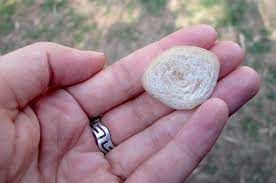Otolith Rings:

Marine biologists at the University of Southampton have developed a technique to decode the chemistry of otoliths.
- Otolith rings is a stony lump in the fish ear.
- These are much like tree rings which reveal fish’s age.
- Different forms or isotopes of oxygen in the otolith indicate the temperature the fish experienced when it was alive.
- Carbon isotopes reveal how quickly food was converted into energy.
- Fish carry their fitness trackers in their ears. They are commonly known as “earstones,” are hard, calcium carbonate structures located directly behind the brain of bony fishes.
- There are three types of otoliths, all of which aid fish in balance and hearing:
- Sagitta: The largest of the 3 pairs of otoliths, sagitta is involved in the detection of sound and the process of hearing, or converting sound waves into electrical signals.
- Asteriscus: This type of otolith is involved in the detection of sound and the process of hearing.
- Lapillus: This type of otolith is involved in the detection of gravitational force and sound.
- Different species have otoliths of different shapes and sizes; and cartilaginous fishes, such as sharks, skates, and rays, have none.




